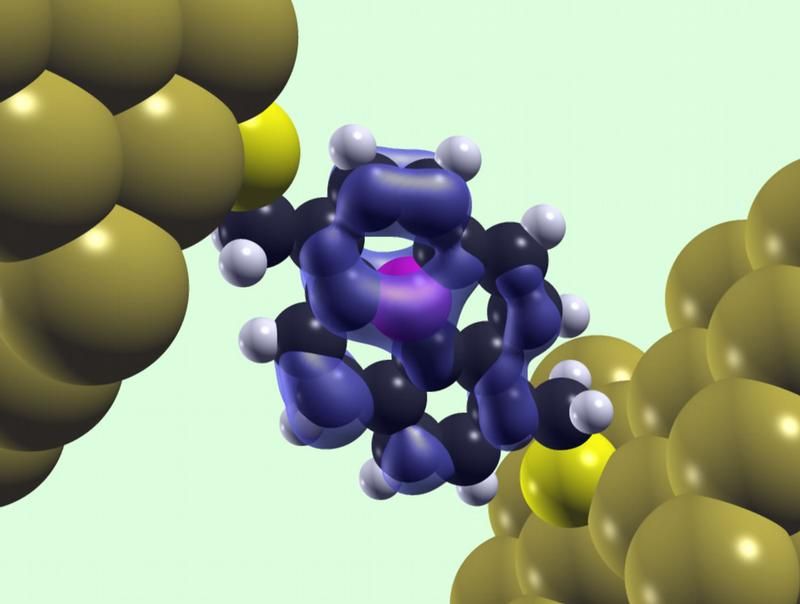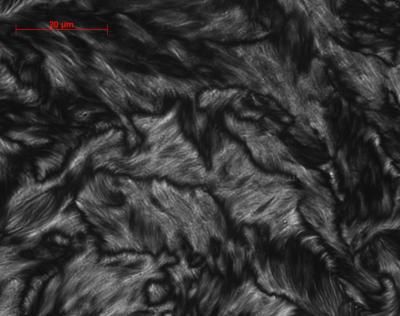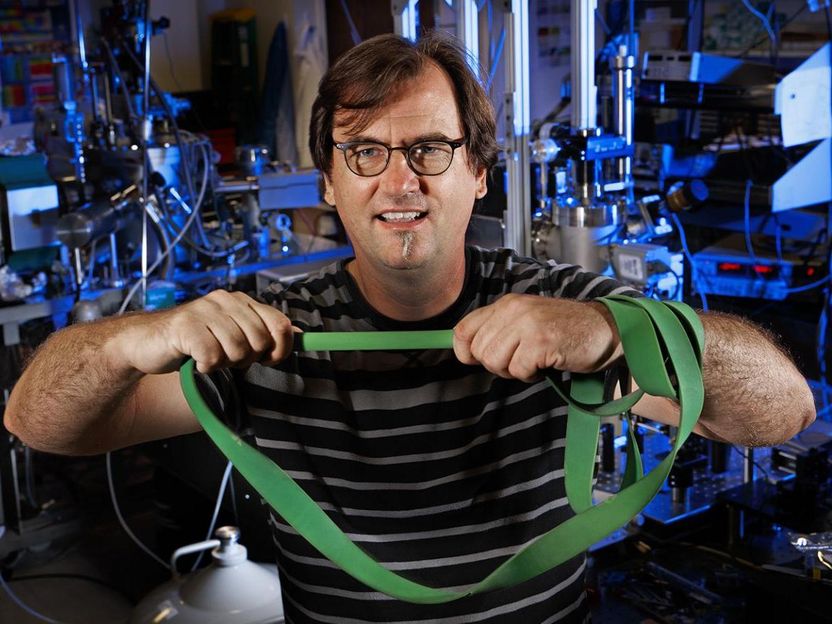Single molecules as electric conductors
Minimum size, maximum efficiency: The use of molecules as elements in electronic circuits shows great potential. One of the central challenges up until now has been that most molecules only start to conduct once a large voltage has been applied. An international research team with participation of the Graz University of Technology has shown that molecules containing an odd number of electrons are much more conductive at low bias voltages. These fundamental findings in the highly dynamic research field of nanotechnology open up a diverse array of possible applications: More efficient microchips and components with considerably increased storage densities are conceivable.

A sinlge molecule as electric conductor.
Heimel
Researchers from Graz University of Technology, Humboldt University in Berlin, M.I.T., Montan University in Leoben and Georgia Institute of Technology report an important advance in the understanding of electrical conduction through single molecules. One electron instead of two: Most stable molecules have a closed shell configuration with an even number of electrons. Molecules with an odd number of electrons tend to be harder for chemists to synthesize but they conduct much better at low bias voltages. Although using an odd rather than an even number of electrons may seem simple, it is a fundamental realization in the field of nanotechnology - because as a result of this, metal elements in molecular electronic circuits can now be replaced by single molecules. "This brings us a considerable step closer to the ultimate minitiurization of electronic components", explains Egbert Zojer from the Institute for Solid State Physics of the Graz University of Technology.
The motivation for this basic research is the vision of circuits that only consist of a few molecules. "If it is possible to get molecular components to completely assume the functions of a circuit's various elements, this would open up a wide array of possible applications, the full potential of which will only become apparent over time. In our work we show a path to realizing the highly electrically conductive elements", Zojer excitedly reports the momentous consequences of the discovery. Specific new perspectives are opened up in the field of molecular electronics, sensor technology or the development of bio-compatible interfaces between inorganic and organic materials: The latter refers to the contact with biological systems such as human cells, for instance, which can be connected to electronic circuits in a bio-compatible fashion via the conductive molecules.
Original publication: Georg Heimel et al.; "Doping Molecular Wires", Nano Letters 2009, Vol.9, Issue 7
Most read news
Organizations
Other news from the department science
These products might interest you

VOLTAMMETRY CELLS by C3 Prozess- und Analysentechnik
Replace many sensing elements with our versatile voltammetry cell for precise measurement results

Interface 1010™ by C3 Prozess- und Analysentechnik
Optimize your electrochemical measurements for precise results and a wide range of applications

Reference 620 by C3 Prozess- und Analysentechnik
Potentiostat / Galvanostat / ZRA with maximum sensitivity and minimum noise for pioneering research

Rotating ring disk electrode-3A Rotator by C3 Prozess- und Analysentechnik
Precise rotation and easy electrode change - Discover the innovative Rotator system!

Get the chemical industry in your inbox
By submitting this form you agree that LUMITOS AG will send you the newsletter(s) selected above by email. Your data will not be passed on to third parties. Your data will be stored and processed in accordance with our data protection regulations. LUMITOS may contact you by email for the purpose of advertising or market and opinion surveys. You can revoke your consent at any time without giving reasons to LUMITOS AG, Ernst-Augustin-Str. 2, 12489 Berlin, Germany or by e-mail at revoke@lumitos.com with effect for the future. In addition, each email contains a link to unsubscribe from the corresponding newsletter.




























































